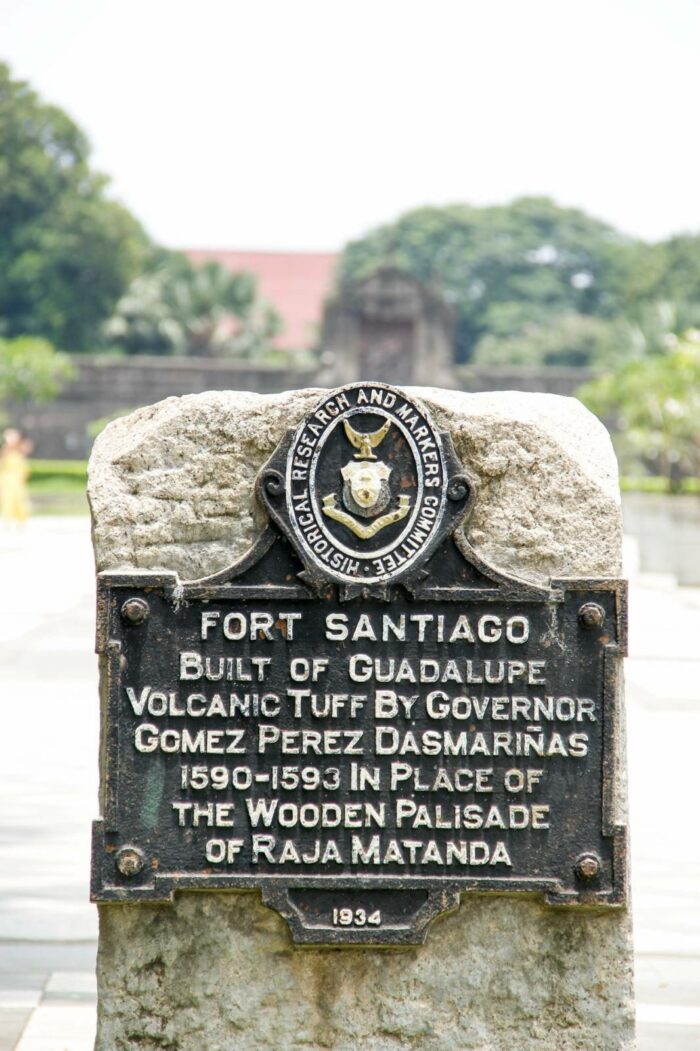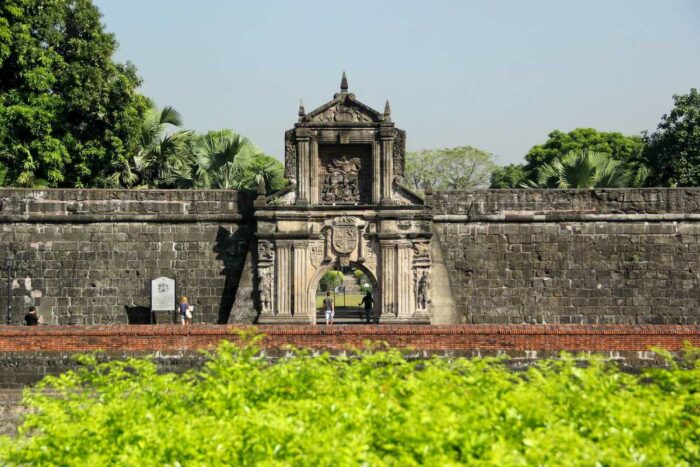Fort Santiago in Intramuros, Manila
Fort Santiago, an artifact of stone and memory, poses as both sentinel and sage. Its ramparts hold not only history’s remnants but also reflect the human journey. Each weathered stone seems to whisper a universal truth: that our pursuits, like its walls, stand against the relentless current of time. Within its confines, past and present coalesce, and we are reminded that the fort is not only a fortress of defense but a repository of wisdom. It urges us to contemplate the dual nature of preservation and impermanence, prompting introspection on how our lives intersect with the tides of existence.
In this article, you’ll be introduced to an immersive journey connecting the past and present, enriching you with insights and memories to cherish.

About Fort Santiago
Fort Santiago, established in 1571, stands as an enduring fortress crafted by Spanish navigator Miguel López de Legazpi for Manila’s protection. Nestled within Intramuros, Manila’s walled city, this citadel bears profound historical significance. It served as a somber prison, witnessing lives lost during the Spanish Empire and World War II. José Rizal, a revered Philippine hero, endured captivity here before his 1896 execution. The Rizal Shrine Museum echoes his legacy through a curated collection. Marking his final steps in bronze, the fort immortalizes his walk to the execution site. Adjacent to the Manila Cathedral and Palacio del Gobernador, Fort Santiago beckons with tales of courage and sacrifice.
History
Fort Santiago, established by the Spaniards in 1571, stands as one of Manila’s oldest defenses. Originally a palisaded structure built by Rajah Soliman on the native settlement of Maynila, it was strategically positioned at the juncture of the Pasig River and Manila Bay. The fort suffered destruction in 1574 during a Chinese assault led by Limahong. Between 1589 and 1592, a stone fort was constructed, later repaired and expanded after the 1645 earthquake.

Over time, the fort served as headquarters and prison for various occupying forces, including the Spanish, British, Americans, and Japanese. The Battle of Manila in 1945 caused severe damage, after which the fort was used as a depot by the U.S. Transportation Corps until it was returned to Philippine control in 1946.
In 1950, it gained the designation of Shrine of Freedom, paving the…
Click Here to Read the Full Original Article at Out of Town Blog…
